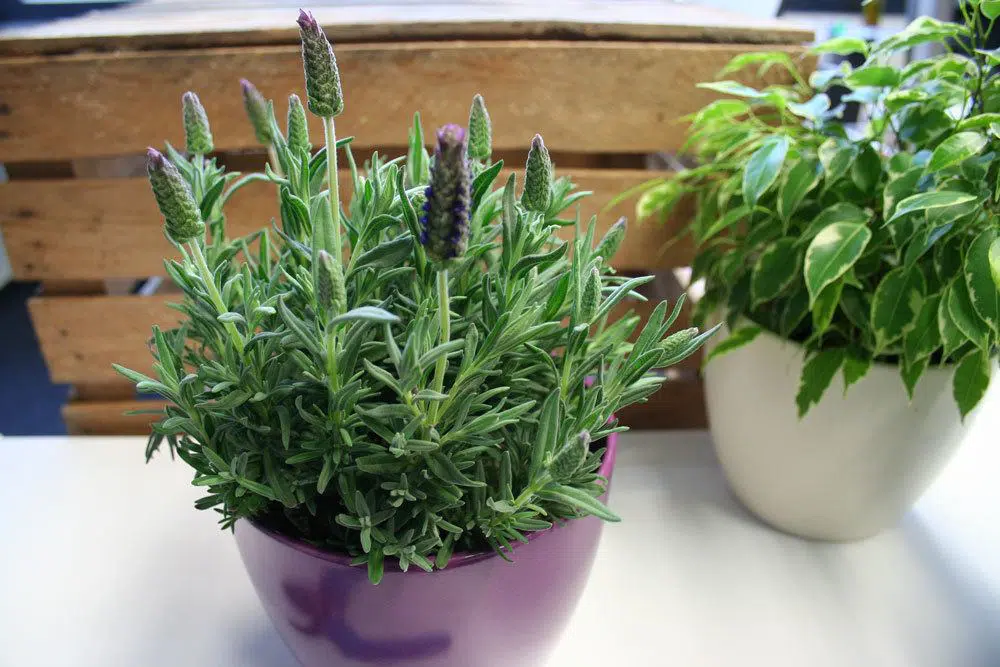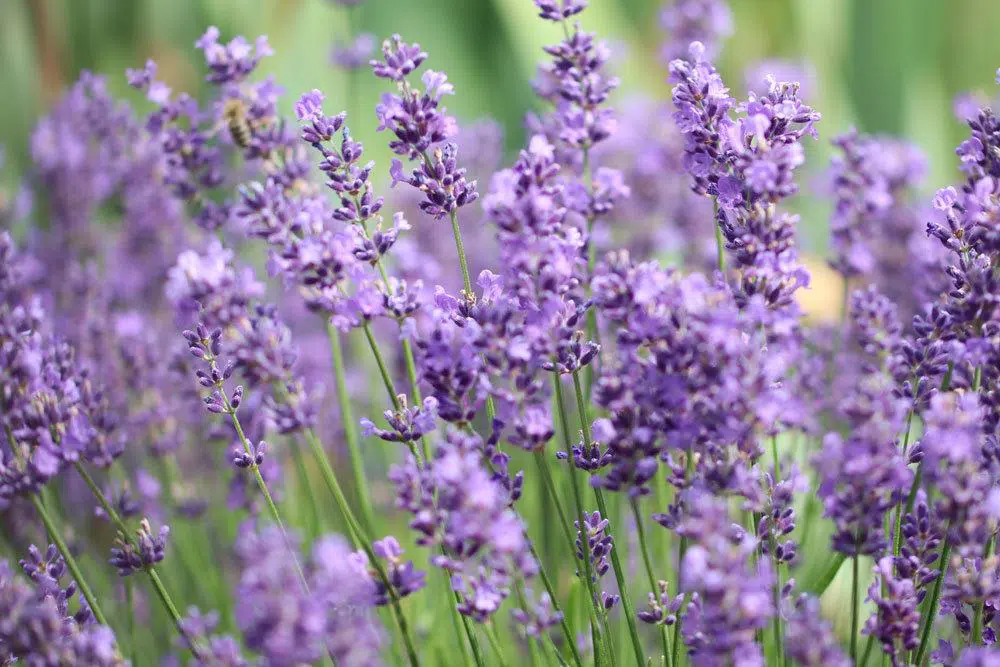Known and appreciated lavender (Lavandula angustifolia) used as an ornamental and medicinal plant, especially for its purple flowers that exude an intense fragrance. Cultivation is possible both in the garden and in pots or tubs. Over the years, it grows larger and stronger, requiring a change of location or transplanting into a larger pot. But when is the best time for this and what should be considered?
Contents
Transplant lavender
In the garden, this plant can reach a stately age of up to thirty years, in the container – much less. Of course, at some point this is also noticeable in the size of the lavender. Accordingly, after some time it may become too crowded in the old location, so it is time to move it.
Time
When it is best to transplant lavender depends primarily on the prevailing weather and temperatures. Since these plants are somewhat sensitive to frost, you should transplant them neither too early nor too late. Ideally, choose the spring, starting around mid-March. Then no more severe frosts or night frosts are to be expected and the lavender has not yet started new shoots.
If the right time was missed or it was too cold and/or too wet in the spring, it can still be transplanted in July, but at the latest in the first week of August. It should not be later. Otherwise, the plants will not be able to root sufficiently until winter and, in the worst case, will not survive it. In fact, if it is already too late, it is better to wait until next spring to transplant.
Transplant lavender: Instructions
When transplanting lavender (Lavandula angustifolia), some tact is required. If the roots are damaged too much in the process, it may die. In most cases, however, the plants will recover within the next year or two. To do this, you should know that they have deep taproots and also otherwise an extensive root system.
- Before transplanting, find a suitable location
- At the new location, dig a sufficiently large planting hole
- About one third wider and twice as deep as the root ball
- Dig out the plant with as much root system as possible, including the soil.
- Damage roots as little as possible
- Place the lavender in the center of the new planting hole
- Fill with soil and press firmly
- Water plant thoroughly
- Water will fill cavities in the planting area
- This favors faster growth
- In the last step, cut the plant back by a third, maximum half.
- Do not cut into the old wood
Tip: Lavandula angustifolia is a very good planting partner for roses. Both species are sun-loving and, in addition, the fragrant lavender can keep pests away from the roses.
Harden off young plants first
Young plants that have been pre-cultivated indoors or in a greenhouse need to be hardened off before transplanting outdoors. This is important so that they do not suffer a shock when planted out in the garden, because by then they have grown up under controlled conditions. Now, to best prepare them for the move, place them in a location with lower temperatures and humidity for about two to three weeks before transplanting. After that, they can be transplanted to their final location in the garden.
Transplanting to the garden
First, the soil in the planting area must be well loosened to a depth of 20 cm and cleared of weeds. Then dig small planting holes and carefully insert the young plantlets. The holes are then filled with soil and pressed firmly with your hands. The young plants should not be placed too deep, this could affect successful growth. Now you just need to water well, which must be maintained during the following weeks.
Transplant lavender in a container
This blue-flowered beauty is a very frugal plant, which also feels comfortable in the tub. However, this requires that the pot or tub is large enough. The material also plays an essential role. Plant pots made of clay, terracotta or ceramic are best suited, because their porous structure allows excess moisture to evaporate better. This is not the case with plastic pots, where waterlogging can form very quickly.
If the pot is well rooted or the plant is lazy in flowering, it must be transplanted into a larger pot. This is usually the case every year. Freshly purchased plants should also be repotted as soon as possible after purchase. The reason for this is the substrate, which is usually not optimally adapted to the plants in question. The best time for repotting is in the spring, although potted lavender can basically be transplanted at any time from March to September.

Tip: For cultivation in a pot are suitable especially lavender varieties with a low growth. With an appropriately large pot, for example, the up to one meter high Speiklavendel is also suitable.
Instructions for potting
- Roots of Lavandula angustifolia need a lot of space
- Both in width and depth
- Pot should be large, especially deep enough
- Drainage holes in the bottom of the pot, a must
- Excess water must be able to drain well at all times
- On the bottom of the pot, first put a drainage layer
- For example, of gravel, clay shards, pumice or expanded clay
- Then cover drainage with a fleece
- Fleece prevents soil trickling through the drainage
- This could clog the holes in the soil
Now fill the pot about halfway with a suitable substrate and detach the plant from the old pot. After removing as much of the old soil as possible, place it in the new pot, fill it up with soil and press it down. As with transplanting in the garden, lavender in a pot must be watered abundantly at the end.
Suitable substrates for keeping in pots
The right substrate is usually half the battle. Lavender thrives particularly well in soil with a high pH. High pH means that the substrate should be as chalky or alkaline as possible. In addition, it should be dry, low in nutrients and permeable. Commercially available potting soil is not so well suited for these plants, it is too rich in nutrients.
It is better to use a special soil, in this case a herb soil. Such substrates usually contain significantly fewer nutrients and are tailored to the specific needs of certain plants. They also contain a certain amount of sand, which ensures permeability.










